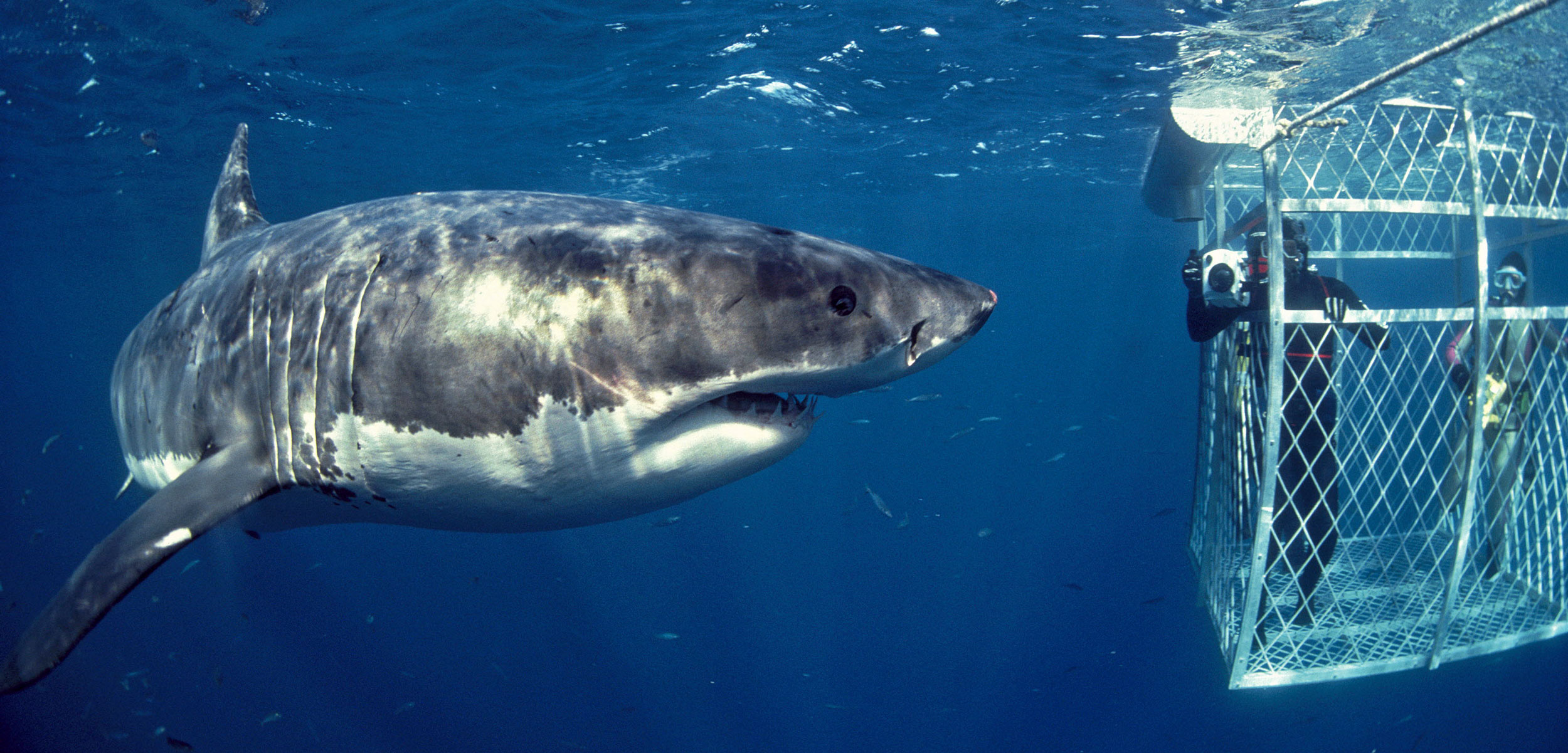The Shark Was Thiiiis Big (Plus or Minus a Meter)
People think small sharks are bigger, and big sharks are smaller, than they really are.
Article body copy
The cliché of the big fish story is, apparently, based on truth—humans love to exaggerate, especially when it comes to the size of the fish they saw. Fishers will often kvetch about “the one that got away,” and surfers will amaze with tales of giant sharks swimming right under their legs. You’ll have to trust them, of course, because there was no time to crack out the tape measure to confirm. Yet in a world where conservation scientists increasingly rely on data gathered by nonexpert volunteers, this has long been a concern. Now, a team of scientists including Charlie Huveneers, an ecologist at Australia’s Flinders University, has documented just how bad nonexperts are at estimating the sizes of massive fish.
In a new paper, Huveneers and his colleagues compared scientifically reliable measurements of great white sharks with estimates made by scuba-diving tourists; scuba tour boat employees, who see a lot of great white sharks; and trained shark scientists.
On the surface, their conclusion is unsurprising. “We showed that the general public is just not that accurate at sizing up white sharks,” says Huveneers. While scientifically trained experts could reliably gauge the sizes of the sharks, divers and tour operators could not, with estimates off by half a meter on average and sometimes up to a full meter.
Intriguingly, however, both amateur groups tended to think that small sharks were bigger than they really were and big sharks were smaller. This pattern has also been seen with whale sharks, the biggest fish in the ocean. Scientists offer no explanation why people tend to skew their estimates this way.
The experiences of wildlife tour operators will always be valuable to researchers and conservationists, but this result shows that scientific training matters. “The main factor driving accuracy was not how much time a person spends with white sharks, but how much experience they have with scientifically measuring sharks,” says Cameron May, an honors student at Flinders University and the study’s lead author.
It matters that two groups of people that provide a lot of data to citizen science projects are regularly getting that data wrong. Body size is a key indicator of population health, says Alistair Dove, a marine biologist at the Georgia Aquarium who was not involved in the study. Scientists use population models to determine how a species might react to, or recover from, conservation threats. “If we’re getting the size estimates wrong, then we may make bad decisions about how to manage the population, and that’s not good for the sharks or the ecosystems that rely on them,” says Dove.
For citizen scientists to reliably estimate the sizes of sharks they see, they’ll need some kind of scientific training to avoid the very human failing of stretching the truth.

